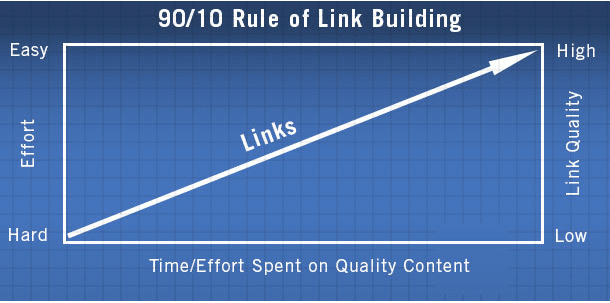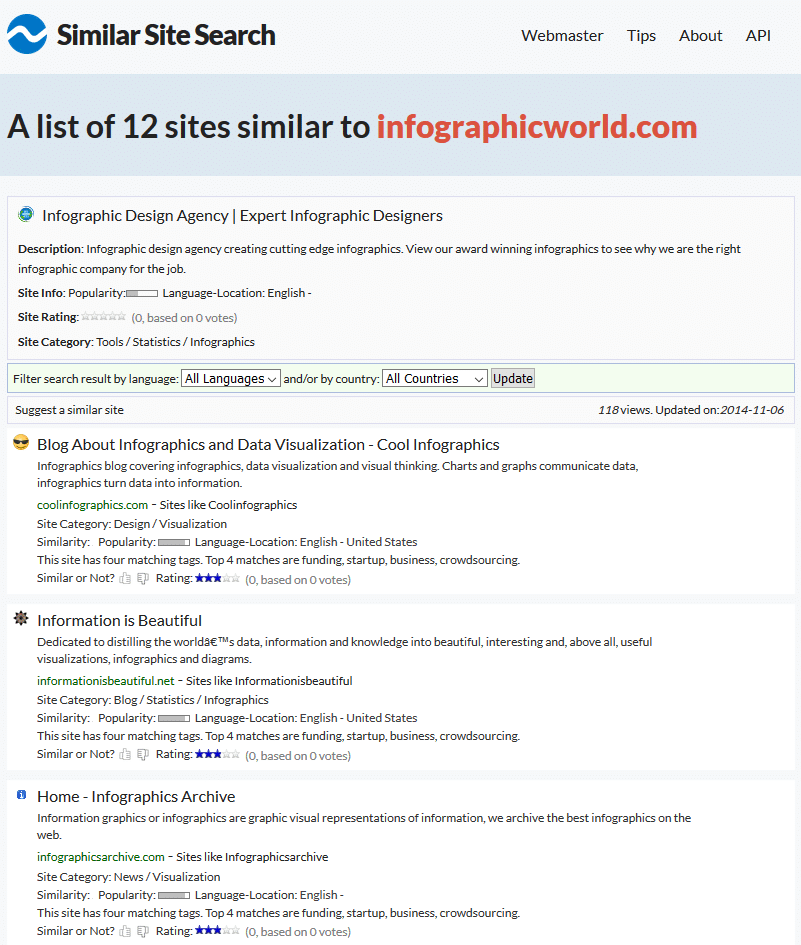Effective infographic marketing campaigns use backlinks strategically. Many brands use infographics to build backlinks, which helps them secure high rankings on search engines.
But .. what are backlinks? And what are the search engine optimization (SEO) value of backlinks? Do they help brands secure high rankings on search results pages? How much influence do the ranking factors have on content marketing efforts? Is there a certain number of backlinks that guarantee higher rankings on search results? Do certain backlinks hold more value than others?
Search engines constantly change their algorithms to determine which sites land on the first page of search results. But one aspect of backlinks has always remained true: Backlinks matter and you need them to increase the SEO value of your content.
Here at IGW, we specialize in helping brands increase their online visibility. We know a thing or two about SEO and the complexities behind using it to get your content in front of the right audience at the right time. To simplify understanding backlinks, we’ve put together a helpful Beginner’s Guide to Link Building. Let’s get started!
What Are Backlinks?
Any time a website links to another website, this is known as a backlink. Commonly referred to as “inbound links,” this type of connection takes place between external websites. When a website links to another page on the same site (the same domain), this is not a backlink. The link must occur from outside the domain.
When your content gets a backlink from another site, it’s much like receiving a “vote” or a thumbs up. The more thumbs up you get, the better. You do, however, want to ensure these thumbs ups are coming from credible, authoritative sites.
The quality and quantity of backlinks are both important. The quality of those backlinks plays a significant factor in just how valuable and relevant they truly are for people; this is all thanks to Google’s Penguin update.*

Take for example you have an article posted on your site about the starting a small local business in the state of Illinois. Within the article, you include information derived from an infographic on the state of small businesses in Illinois. When citing a statistic from the infographic, you link to it. This is a prime example of using a backlink for outreach and how one can be used to provide great value to the end user. The reader of the target audience can click on it and will be taken directly to the local source of the information that you cited.
What Does a Backlink Look Like?
It is very important to understand that typing out a URL in an article doesn’t necessarily constitute it as a backlink. It must include an href attribute within its code, and it has to be clickable. Check out the following example for a better understanding of what does and does not qualify as a backlink.
|
Does not qualify as a backlink: To increase your brand’s visibility on the web, visit https://infographicworld.com/. |
| Does qualify as a backlink: To increase your brand’s visibility on the web, visit Infographic World. |
A backlink is usually underlined and appears as a different color from the rest of the text. When you click on it, you will be taken directly to the site of the URL embedded within the anchor text, or you will be given the option to be taken to the site.
What is anchor text? The anchor text represents the words that are a different color; they include the embedded code that makes the text clickable. In the example used above, the anchor text is “Infographic World.“ The anchor text and its relevance to the backlink that is embedded within it are important for SEO reasons.
Here’s an example of properly used anchor text and improperly used anchor text:
|
Many marketers are using retargeting on Facebook to increase their brand’s visibility. |
| Many marketers are using retargeting on Facebook to increase their brand’s visibility. |
In the first sentence, the anchor text is “retargeting on Facebook,” which is exactly what the article is about that the anchor text is linked to. In the second sentence, the anchor text of “many marketers” is irrelevant to what the article is about that the text is linking to. Google and other search engines take note of anchor texts and what they are linked to, and they give more credit to those that exhibit relevancy.
Knowing How to Acquire Backlinks
Now that you know what backlinks are and how anchor text comes into the picture, it’s time to take a look at how you can acquire backlinks.
When it comes to building backlinks, you need to know about domain authority (DA). A site’s DA is how trustworthy it is. And according to Copyblogger, DA represents roughly 24% of Google’s ranking algorithm. To put it simply, you need backlinks to your site that are coming from sites with a high DA.
To better understand how and why to use backlinks, it’s important to know Google’s mission.
By understanding Google’s mission statement, it becomes easier to acquire backlinks. You must provide useful “information and make it universally accessible and useful.” When you create content that is aligned with this mission, you will naturally attract backlinks from authoritative sites with high quality content.
What does all of this mean?

It’s not about getting as many new backlinks to your content as quickly as possible. If you publish a new piece of content and you have 10 sites that are ready to link back to it, this could actually backfire on you because it looks manipulative in the eyes of Google and other search engines.
Instead, what you want to do is publish the content, help Google index it as quickly as possible so that it starts showing up in search results. From here, you’ll start acquiring quality, REAL links that will further improve your rankings.
Is there a way to help Google index your content quicker? Yes, and it’s so simple! All you have to do is run your site through Alexa. You’ll need to do this every time you publish a new post or make a change to your site. When you type in your site’s URL on Alexa to look up its metrics (as shown in the example below), an optimized page is added to the database. Google crawls this database on a regular and frequent basis. This means your new content will be picked up and indexed by Google very quickly.
Another key way to get your content indexed by Google fairly quickly is to make sure you post it on Google+. After all, Google+ is Google’s own social media platform. Always make sure your post is set to be shared publicly; this ensures it reaches the widest audience as possible.
It is extremely important that you don’t get your cart ahead of the horse when building inbound links. You must have quality content before you even think about building links. The 90/10 Rule applies specifically to link building.
If you’re struggling to acquire backlinks to your site, there’s a very good chance your content isn’t worthy of attracting them. Link building is essentially all about positioning your content in a way that it naturally gets people to link to it.
This doesn’t mean, however, that you can’t take steps to acquire backlinks. Reaching out and connecting with other industry specialists is key to building backlinks to your site.
But I don’t know how to build backlinks. That’s okay! We do, and we’re here to share a trick with you.
Go to Similarsitesearch.com, and type in your site’s URL and then hit the search button as shown in the image below.
After you click search, you’ll be provided with a list of sites that are very similar to yours.
Neat uh?! These are sites that you can reach out to and ask about building links for one another. You’ll not only want to see if those sites will link back to your site, but you’ll also tell them you want to link to their sites. It’s a win-win for both of you!
Before you start going down the list and reaching out to every site owner on the list, you first need to assess which ones are worth reaching out to the most. To do this, there are several metrics to look at.
First and foremost, you need to look at each site’s DA. You can use the Moz Bar tool (link is found at the bottom of this posting) to retrieve the DA for each site. Domain relevancy and trust flow are two other metrics to assess as well as citation flow. Furthermore, it’s important to assess branded keywords and anchor text on each site. It is crucial that the anchor text used to link back to your site be branded. For example, a solid anchor text for a backlink to a piece of content on Infographic World would look something like “Infographic World visual design specialists.”
Can Guest Blogging Be Used to Acquire Backlinks?
Yes, guest blogging can be used to acquire backlinks, and it happens to be one of the most effective ways to do so. Creating a solid backlink strategy should be core to your infographic marketing campaigns. Effective infographic SEO is significantly impacted by your ability to acquire backlinks.
What is guest blogging?
Guest blogging takes place when you create a piece of content or infographic and have it published on another brand’s site. As part of the guest blogging agreement, the site your content is published on will link back to your site. It’s a mutually beneficial agreement in that you acquire a backlink and the other party acquires quality content to publish on its own site, which will attract readers and improve its rankings. Thanks to the backlink you acquire, your site will enjoy higher rankings, as well.
Remember that list of sites you received when you typed in your site’s URL on the Similar Site Search tool? The sites that show up in your list are great entities for you to guest blog for. All you have to do is reach out to the marketing manager or site owner of each domain and ask if you can contribute a guest blog post.
The Takeaway

The success of your infographic marketing campaign heavily relies on your ability to acquire backlinks. If building backlinks and using them correctly seems intimidating, you’ll definitely benefit from letting a team of SEO backlink specialists create and deploy a backlink strategy for you. Learn more about getting and using quality backlinks now by contacting IGW.
Use Infographics To Increase Inbound Leads Today
Source
https://searchengineland.com/library/google/google-penguin-update
https://www.similarsitesearch.com/
www.copyblogger.com
https://moz.com/products/pro/seo-toolbar
https://www.alexa.com/














